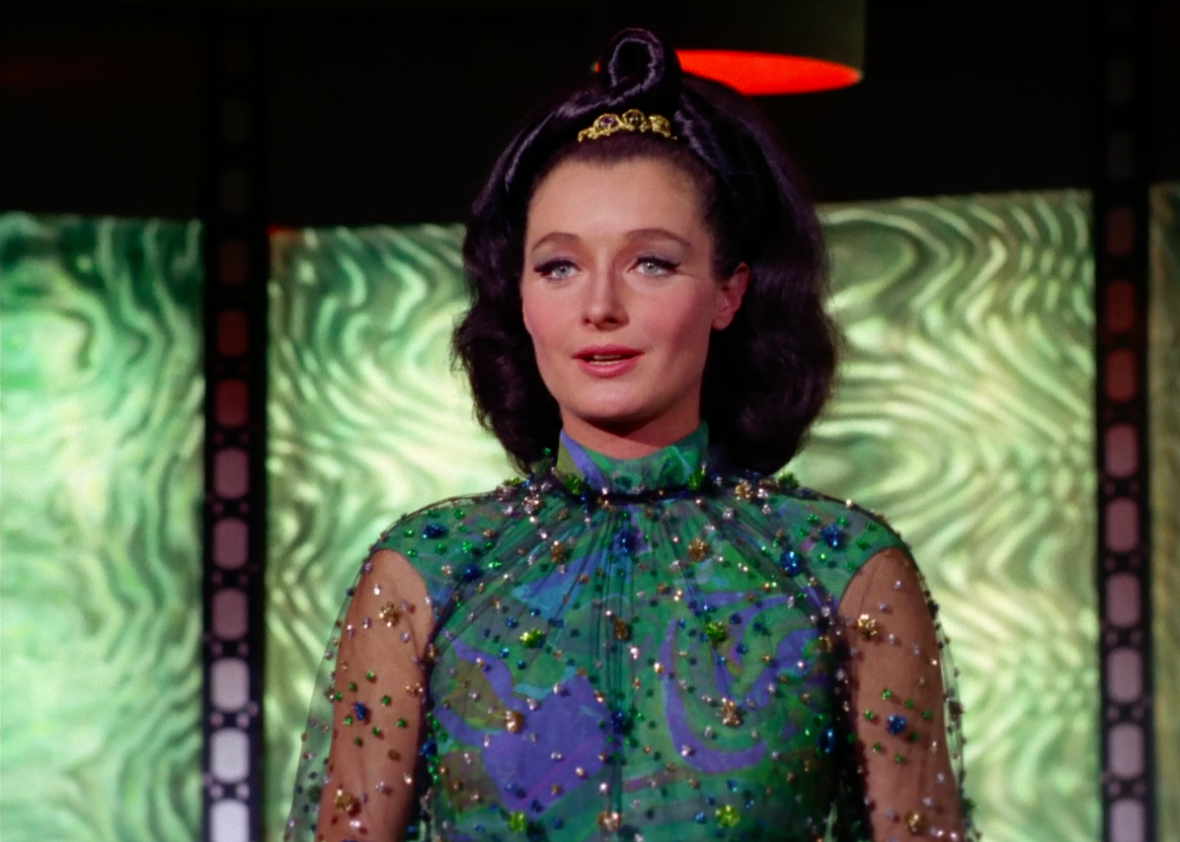When Star Trek: The Original Series debuted in 1966, its inclusivity was groundbreaking. The show featured a black female communications officer, a Japanese helmsman, and a Russian navigator (an unthinkable addition, during the Cold War).* Subsequent Treks strove to expand on creator Gene Roddenberry’s initial vision: Deep Space Nine gave us the first black man to lead a Star Trek series, while Voyager saw the first female captain at the center of the action.
But Star Trek Beyond, the new Star Trek movie released this past Friday, can feel surprisingly retrograde at times. Part of the issue is that casting decisions that were radical in the ’60s just aren’t as impressive today—something that is never more obvious than in a scene in Beyond where the film’s five white, male leads are all in the same room, the rest of the (more diverse) crew trapped elsewhere. Other problems with representing race and gender could have been avoided: 2013’s Into Darkness drew outrage for whitewashing legendary villain Khan Noonien Singh (the big bad in that movie was played by Benedict Cumberbatch), while both Star Trek and Into Darkness gave their female characters weird, gratuitous underwear scenes.
To its credit, Beyond includes more women in substantial roles and has even subtly established the franchise’s first mainstream, openly gay character. But Star Trek has always been about boldly going where no man has gone before, not taking baby steps, and the new movies are missing out on a huge opportunity to give screentime to a group that’s often completely left out of conversations about representation, one that has long played a role in the Star Trek universe: people with disabilities.
Disability has been central to Star Trek since The Original Series. “Is There In Truth No Beauty?” centers around an ambassador, Miranda Jones, who is blind and able to move around with the aid of a sensor web:
Spock: I fail to understand why you apparently try to conceal your blindness, Dr. Jones.
Kirk: I think I understand. You said it: “Pity is the worst of all.”
Jones: Pity. Which I hate. Do you think you can gather more information with your eyes than I can with my sensors? I could play tennis with you, Captain Kirk. I might even beat you. I am standing exactly one meter, four centimeters from the door. Can you judge distance that accurately? I can even tell you how fast your heart is beating.
Miranda’s blindness is the big reveal of the episode, but for the character, it’s one trait among many—she’s also a psychologist, a telepath, and has a complicated personality, and her fury at being pitied is gratifying. Not only that, but Miranda’s sensor web, which is subtly designed to blend in with her clothing, is one of the most fascinating proposed inventions in the entire Original Series.
By The Next Generation, technology for people who are blind has come even further—the series gives us our first recurring character with a disability, Enterprise engineer Geordi La Forge, who is blind from birth but has his vision supplemented by an electromagnetic device known as a VISOR that lets the wearer see the infrared and ultraviolet spectrums. (He would later receive ocular implants.) In Voyager, when Tuvok is blinded from an injury, we learn that starships are even equipped with a tactile interface, technology that would allow a blind crewmember to work on the bridge without personal enhancements.
The series’ representation of disabilities is not limited to blindness: “Loud as a Whisper” features Riva, a deaf mediator (played by Howie Seago, also deaf) who communicates telepathically through three interpreters. When Captain Picard speaks to one of the interpreters instead of to Riva himself—an extremely rude faux pas in the deaf community—Riva calls him on it. And when Riva’s interpreters are killed, he reveals that he also knows sign language, a skill that becomes crucial to his ability to mediate.
The list goes on—Nog from Deep Space Nine loses his leg and must adjust (both physically and psychologically) to using a prosthesis. “Melora” centers around an alien Starfleet officer whose physiology makes mobility difficult outside of her home planet but who refuses a surgery that would correct the issue, relying instead on an anti-gravity chair. And Lieutenant Barclay, whose social anxiety results in a stammer, proves instrumental in making contact with Voyager. Enterprise features an entire race born without sight.
That’s not to say that Star Trek has always treated its disabled characters with perfect respect. “The Menagerie” is about Spock violating the Starfleet’s most serious rule just so that Admiral Christopher Pike, who is paralyzed and unable to speak, can live a “normal” life—something he does against Pike’s express wishes. But for better or worse, Star Trek has always made an effort to address disability’s place in a utopian future, and more radically, to suggest that it does have a place there. In an era where cancer can be cured with a hypo spray, characters with disabilities are not magically “fixed”; in fact, practicing genetic engineering is strictly forbidden after the Eugenics Wars. Instead, people with disabilities are accepted, their lives improved by advanced technology, increased accessibility, and progressive social attitudes.
In 2009’s Star Trek, the alternate-timeline Pike winds up in a wheelchair as a result of his injuries—a nod, surely, to “The Menagerie.” By Into Darkness, Pike is walking with a cane. But Pike dies early on in Into Darkness, killed off mainly to give Kirk and Spock something to feel angst over. And Beyond doesn’t feature a single character with a visible disability. For all Star Trek’s considerable strides over the years, this is a big loss for a franchise that was once at the vanguard of representing the most under-represented group on TV.
*Correction, July 26, 2016: This post originally misstated that Star Trek: The Original Series debuted in 1968. It debuted in 1966.
